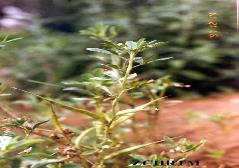
Trigonella foenum graceum / الحلبة
Fenugreek
Helba, Basbasa, Hulba
Background
- Fenugreek is an annual herb 50-70 cm high with erect glabrous or pubescent stem
- The plant is generally distributed in North Africa and Eastern Mediterranean
- It is cultivated all over the world and naturally grows in sandy, silty and clay soils
- In UAE it is cultivated in private farms.
Part(s) Used
Seeds and aerial parts
Traditional and Medicinal Uses
The seeds are used in cooking, in medicine, and to hide the taste of other medicine. Fenugreek is included as an ingredient in spice blends and as a flavoring agent in imitation maple syrup, foods and beverages. Fenugreek leaves are eaten in some regions as a vegetable. It has been used as/for:
|
Lactagogue |
Antidiabetic |
Expectorant |
Liver problems |
|
Constipation |
Emmenagogue |
Hemorrhoids |
Scalp infection |
|
Menopause |
Hair& skin care |
Tonsillitis |
Throat infections |
How Much Do We Know?
Fenugreek is taken by mouth for diabetes, menstrual cramps, high cholesterol, and many other conditions, but there is no good scientific evidence to support most of these uses.
What Do We Know About Safety?
- Likely safe for people when taken in amounts normally found in foods.
- Possibly safe when powdered fenugreek seed 5-10 grams is taken for up to 3 years
Using Fenugreek by
Mouth
5-100 grams of powdered fenugreek seed daily
Special Precautions & Warnings
Pregnancy
Likely unsafe when used in amounts greater than those in food. It might cause malformations in the baby, as well as early contractions. avoid use.
Breast-feeding
Possibly safe when taken by mouth to increase breastmilk flow. Some research shows that taking fenugreek 1725 mg three times daily for 21 days does not cause any side effects in
infants.
Children
Likely safe when used in the amounts found in foods.
Keep in Mind
- Do not hesitate to speak with your health care provider before starting to use any supplements.
- Discuss potential benefits and risks, especially if you are suffering from any health problems.
